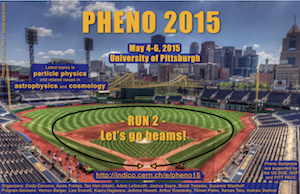Speaker
Jeff Kost
(University of Arizona)
Description
Light scalar fields such as string moduli, axions, and other possible dark-matter candidates play an important role in early-universe cosmology. However, a number of disparate considerations can significantly impact the late-time cosmological abundances of these fields. For example, in cases where the potentials (and therefore the masses) for such fields are generated dynamically --- such as during cosmological phase transitions --- the existence of an associated timescale can have significant repercussions. Moreover, in scenarios with multiple scalars, non-trivial mixing amongst the fields can also give rise to an effective timescale that modifies the resulting abundances. Previous studies have tended to focus on the effects of one or the other timescale in isolation. In this paper, by contrast, we consider a simple two-component toy model and examine what happens when both mixing and phase transitions are introduced together. In general, we find a number of surprising and dramatic features that result from the interplay between the two associated timescales.
Authors
Brooks Thomas
(Reed College)
Jeff Kost
(University of Arizona)
Keith Dienes
(University of Arizona)
